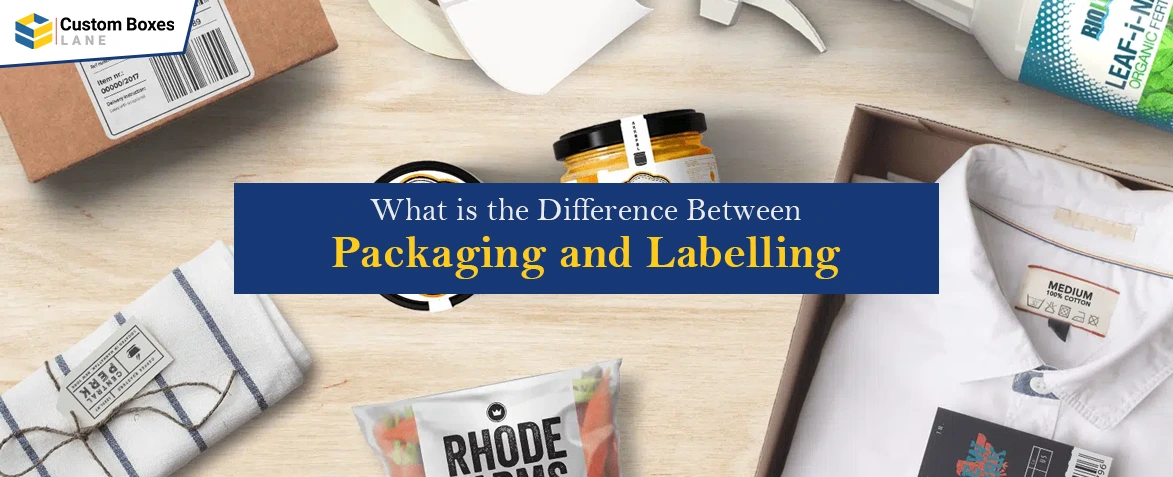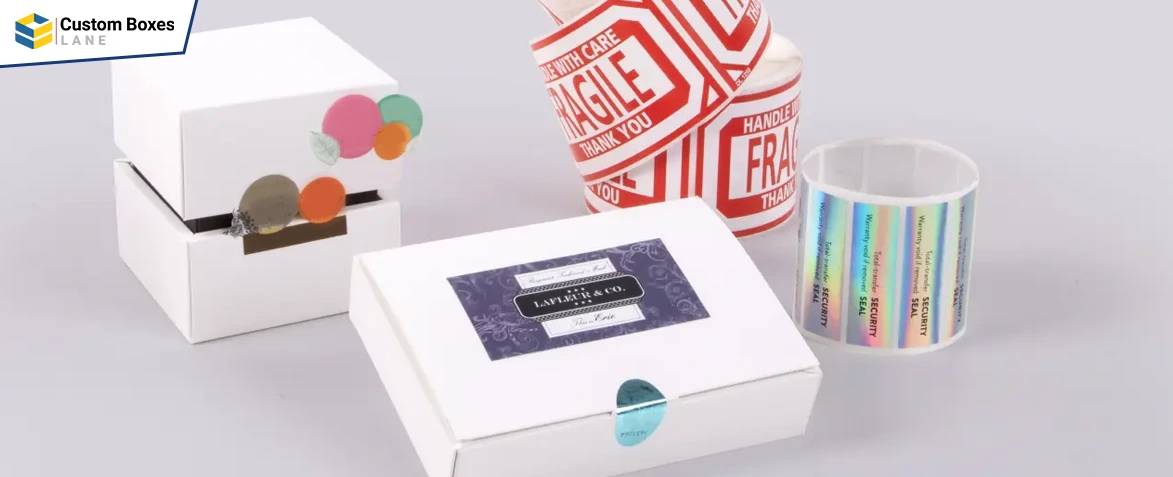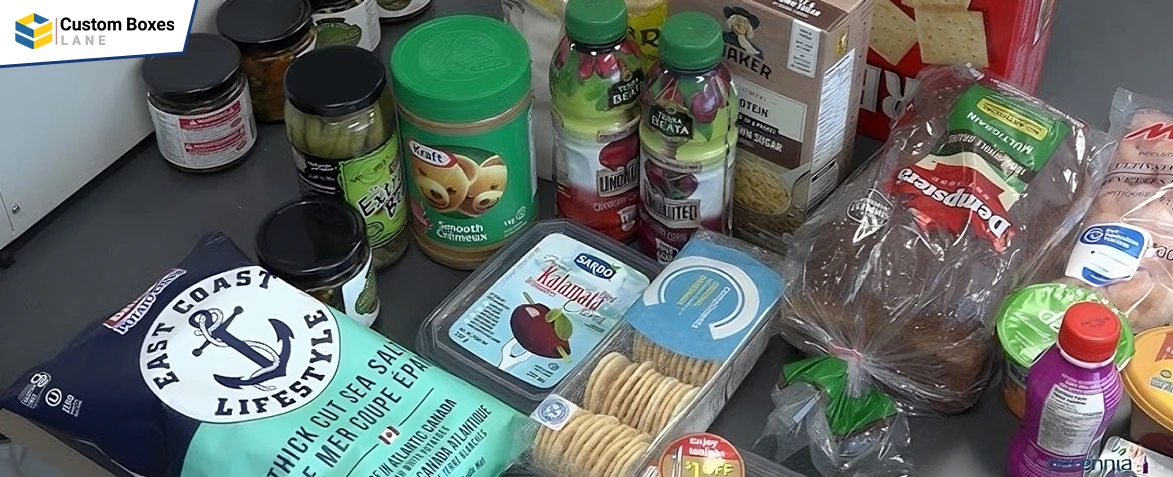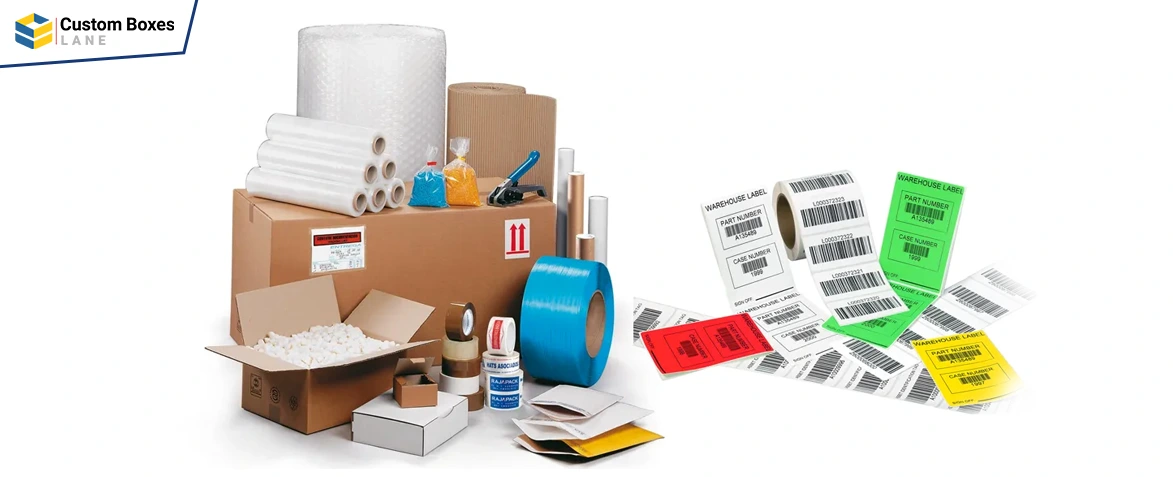What is the Difference Between Packaging and Labelling?
2025-04-29 08:24:07

Packaging and labeling go hand in hand in product-based businesses. Both labeling and packaging are different in many ways. Similarities lie in the purpose of using labels and packaging for various products. Every product needs adequate protection while shipping, storage, and handling. And packaging helps brands protect products.
However, labels are used on the packaging to educate customers about your products and brand. In short, packaging serves optimum product protection, and labels help increase brand awareness. Read this blog to learn the difference between packaging and labelling. Continue reading to explore more!
Overview of Packaging
Understanding the concept of packaging helps you know the difference between packaging and labelling. Packaging is the core element of every product-based brand, acting as a shield to protect products from damage. Protection is not only the function of packaging, but it also enhances product presentation while boosting brand awareness.
Types of Custom Packaging

The difference between packaging and labelling lies in their types and materials. Discreet packaging comes without printed details and looks plain. However, custom packaging can be designed using different design themes, finishes, materials, and cut-outs. The following are some types of custom packaging made from different materials:
Card Stock Packaging
Cardstock is thicker than standard paper and can be used to create boxes and bags for various products. It is flexible and supports all shapes and styles of custom packaging. The best thing about card boxes and bags is that they are eco-friendly, customizable, and protective.
Cardboard Packaging
One of the extensively used shipping cartons, mailer boxes, and storage boxes is made from corrugated cardboard. Corrugated cardboard is constructed using multiple layers of card stock and kraft flutes to ensure sturdiness that withstands shipping and storage shocks.
Tin Packaging
Another excellent option is tin packaging, known for its reusability and recyclability. Both primary and secondary product packaging can be made from tinplate-coated steel. Most premium products are packed in tin containers to ensure protection against moisture and chemical reactions.
Mylar Packaging
One of the best options is flexible mylar bag packaging, known for its excellent barrier properties, lightweight, and compact storage. They are made from a stretchable film of polyester resin to create different shapes and styles.
Fabric Packaging
One of the best alternatives to single-use plastic bags is fabric packaging, made from different fabrics to ensure sustainability. About 38.68 percent of Americans stated they used grocery bags made from cloth to protect the environment. Velvet, cotton, organza, linen, and synthetic leather can be used to create jewelry pouches for protection and premium appeal.
Kraft Packaging
One of the best and 100% biodegradable types of kraft paper packaging, known for its rustic charm, lightweight nature, and strength. Kraft paper’s food-grade properties make it ideal to pack and protect food items.
Plastic Packaging
Despite the drawbacks, plastic packaging is still being used for various products due to its flexibility and sturdiness. Retail products are mostly packed in plastic boxes and bags. However, now bio-plastic packaging is used as an eco-friendly alternative to plastic packaging.
Glass Packaging
Glass packaging is recyclable, reusable, and visually pleasing. Most glass containers and jars are used as primary packaging to protect products from contamination, chemical reaction, and moisture. Most cosmetic and food products are packed in glass packaging.
Advantages of Packaging
Understand the package vs packaging to know the core concept of packaging and the difference between packaging and labelling. Package refers to the container and its contents as a unit. On the other hand, packaging refers to the process of designing, producing, and enclosing products for distribution, sale, or use. Here are a few benefits of packaging, which help you understand the difference between package and labels:
- Improves branding
- Ensure optimum protection
- Enhances product presentation
- Improve products’ perceived value
- Improves your customer experience
- Helps your brand build an ethical image
What Does Labeling Mean?

What is labeling? The answer to this question will help you understand the difference between packaging and labelling. Have you ever noticed a sticker on packaging? If yes, that is the label, which is used to attract customers by giving product information. Labeling is making a product recognizable. The packaging design label contains the following information:
- Price plus Tax
- Product Name
- Batch Number
- Inventory Codes
- Products’ Benefits
- Scanning Barcodes
- Product Instructions
- Products’ Ingredients
- Brand Name, Logo, and Tagline
- Products’ Weight and Quantity
- Manufacturing and Expiry Dates
Types of Labeling

Explore the types of labels to know the key difference between packaging and labelling. The following are some common types of labels made from different materials:
Brand Labels
Every brand uses labels that contain their brand logo, name, and tagline. Brand labels can be made from kraft paper, card stock, plastic, and vinyl. They are often used on product boxes for easy and pocket-friendly customization for small businesses.
Product Labels
Labels that contain product information like name, ingredients, how to use, and benefits. Plastic and glass containers are mostly labeled with product labels to attract customers and to influence their purchasing decisions.
Shipping Labels
Shipping labels are used on shipping boxes to ensure careful product handling during shipping. For example,” fragile” labels are pasted on the boxes that contain delicate products and glassware.
Product Grade Labels
Grade labels are pasted on the product packaging to tell customers the quality of the product. They often contain special product features to influence customers' purchasing decisions.
Benefits of Labeling
You can choose the label package design of your choice while customization. Know the benefits of labels to understand the difference between packaging and labelling. Custom labels and stickers can benefit your business in the following ways:
- Make products’ traceability easier
- Educate customers about your products
- Influence customers’ purchasing decisions
- Act as a pocket-friendly customization solution
Packaging vs. Labeling: Key Differences
Now you can easily understand the difference between packaging and labelling. However, Label & packaging are interconnected, although they have the following key differences:
- Cost
- Design
- Purpose
- Function
- Material
- Application
So, now you can confidently invest in packaging and labels to make your products stand out in the competitive market.
Still have questions about the difference between packaging and labelling, feel free to contact us. We would love to hear from you!

